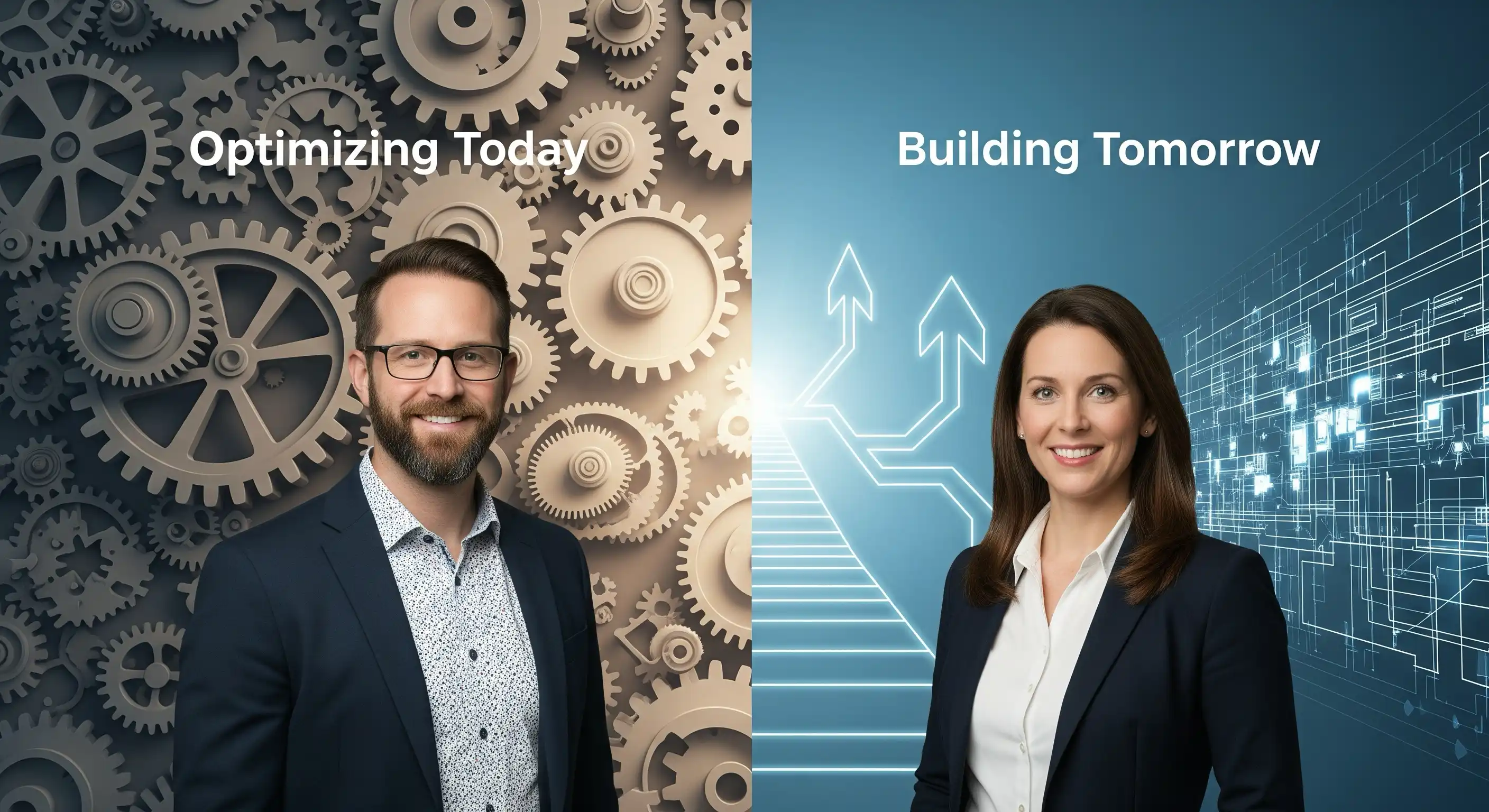
Strategic Innovation: Escaping the Gravity of the Present
Why do so many successful, market-leading companies fail to innovate? It’s rarely due to a lack of resources, talent, or intelligence. The real culprit is the powerful, often invisible, force of their own success: the gravity of the present. The processes, metrics, and cultural norms that drive excellence in the core business are the very things that can stifle the exploration needed to create the future.
Strategic innovation is not about brainstorming sessions or chasing every new technological trend. It is the disciplined, systematic art of managing the present, selectively abandoning the past, and proactively creating the future. It requires a leadership mindset that can operate across multiple timescales simultaneously.
At Excellence Consulting, we guide leaders to navigate this complexity through a proven strategic lens: **The Three Horizons of Growth**. This framework allows organizations to allocate resources and attention appropriately, ensuring both short-term health and long-term relevance.
The Three Horizons: A Framework for Future-Proofing Your Business
-
Horizon 1: Optimizing the Core
This is the realm of your current, primary business. The goal here is to extend and defend the business that generates today's profits. Innovation in Horizon 1 is about continuous improvement: enhancing operational efficiency, refining the customer experience, and maximizing the performance of existing products and services. It is incremental, lower-risk, and focused on delivering results within the next 12-24 months.
Leadership Challenge: The danger in Horizon 1 is complacency. Leaders must foster a culture that is never satisfied with the status quo, constantly seeking better ways to execute. This requires operational excellence and a deep commitment to quality, but also the wisdom to recognize when a core business is reaching its natural peak. -
Horizon 2: Building the Adjacent Future
This horizon focuses on emerging opportunities that can extend your existing capabilities into new areas. It's about taking what you're already good at—your technology, brand, or customer relationships—and applying it to adjacent markets or customer segments. This could involve launching a new product line, adapting a service for a different industry, or leveraging a new technology to enhance an existing offering. Horizon 2 is the entrepreneurial engine of an established company, with a timeframe of 2-5 years.
Leadership Challenge: Horizon 2 requires a different mindset from Horizon 1. It demands a tolerance for ambiguity and the ability to nurture businesses that don't yet have the scale or profitability of the core. Leaders must protect these nascent ventures from the rigid processes and demanding ROI expectations of the core business, giving them space to grow. -
Horizon 3: Inventing the Uncharted
This is the domain of true disruption—creating entirely new businesses in markets that may not even exist yet. Horizon 3 is about discovery, experimentation, and learning. It involves small, dedicated teams exploring speculative ideas, new technologies, and potential business models that could become the company's core business in 5-10 years. It is inherently high-risk and characterized by failure, learning, and pivots.
Leadership Challenge: This is the most difficult horizon for most established companies. The metrics of the core business (like profit and market share) are irrelevant here; the key metrics are learning velocity and the validation of key assumptions. Leadership must act more like a venture capitalist, placing small bets, celebrating learning from failure, and having the patience to wait for a breakthrough.
The Art of Strategic Balance
The genius of the Three Horizons framework is not just in identifying these activities, but in managing them as a balanced, interconnected portfolio. A company that focuses only on Horizon 1 will eventually become obsolete. A company that only chases Horizon 3 dreams without a strong Horizon 1 will run out of cash.
True strategic innovation requires a leadership team that can:
- Protect the core business while simultaneously planting seeds for the future.
- Create different governance models and metrics for each horizon.
- Facilitate the transfer of knowledge and resources between the horizons at the right time.
This is the work we do at Excellence Consulting. Through our collaborative approach of inquiry and co-creation, we help leadership teams assess their current innovation portfolio, identify gaps, and build the organizational capabilities and culture needed to master all three horizons. We help you escape the gravity of the present to build a future by design, not by default.